GENOVESE LOW PANDOLCE original foolproof recipe with STEP-BY-STEP photos.
The GENOVESE PANDOLCE, also known as Genovese Panettone (despite having very different characteristics from Panettone) is a dessert of the Genovese Christmas gastronomic tradition widespread throughout Liguria, often made at home and given as a gift.
The Genovese Pandolce has a circular shape and there are two versions: the tall Genovese Pandolce, a leavened product made with sourdough or yeast with a soft texture, and the low Genovese Pandolce, a sort of enriched shortcrust pastry with raisins, candied fruit, and pine nuts.
Both versions are delicious, but the one that has been prepared in my family for generations is the Low Genovese Pandolce Recipe. I still have the little piece of paper that my grandmother would take out of a kitchen drawer every year: wrinkled, stained, with slightly faded writing but absolutely perfect.
Luckily, my grandmother wasn’t one of those cooks who jealously guard their recipes and take their secrets to the grave. Today that legendary piece of paper has come to me, and with great pleasure, I share with you the Original foolproof Genovese Pandolce Recipe from Grandma Lisetta!
As with all traditional recipes, of course, there are various versions: some add fennel seeds and rum; others use anise seeds and Marsala wine; in more modern versions, raisins are replaced with chocolate chips and toasted hazelnuts; I remain faithful to Grandma Lisetta’s recipe that hasn’t let us down for over 70 years.
I have to say that every year, I look forward to Christmas just to smell that fantastic scent wafting through the house when I bake it and eat a slice. Without “him,” it wouldn’t be Christmas for me.
And then the family production race begins, as both my mom and my sister and I make it in industrial quantities: we even manage to make a hundred each, since we often use it as a Christmas gift for relatives and friends, who now expect it year after year and heaven forbid if it didn’t arrive.
The funniest thing is that in December, during my peak baking activity, my son usually tells me: how good you are, mom, you “smell” like pandolce! But enough chatter, turn on the oven, and let’s start.
Oh, I forgot two things of no small importance, which, if you’re still unsure about making this recipe, will convince you: the first is that since the Low Genovese Pandolce doesn’t require leavening, you can bake it as soon as it’s ready, like a tart, without long waiting times, and the second is that, as my grandmother used to say, if you knead it by hand, it turns out better because you transfer all your love into it, so no mixer is needed, just a bowl! Have I convinced you? If you try it, let me know
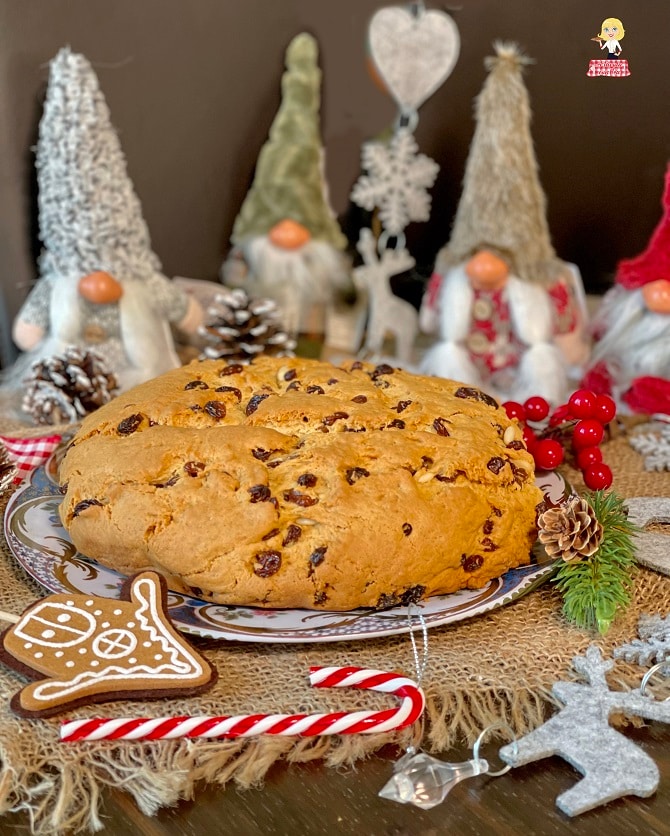
- Difficulty: Easy
- Cost: Medium
- Preparation time: 30 Minutes
- Portions: 6/8 people
- Cooking methods: Oven
- Cuisine: Italian
- Energy 330.10 (Kcal)
- Carbohydrates 51.16 (g) of which sugars 25.90 (g)
- Proteins 6.11 (g)
- Fat 12.62 (g) of which saturated 5.98 (g)of which unsaturated 5.81 (g)
- Fibers 1.98 (g)
- Sodium 18.55 (mg)
Indicative values for a portion of 100 g processed in an automated way starting from the nutritional information available on the CREA* and FoodData Central** databases. It is not food and / or nutritional advice.
* CREATES Food and Nutrition Research Center: https://www.crea.gov.it/alimenti-e-nutrizione https://www.alimentinutrizione.it ** U.S. Department of Agriculture, Agricultural Research Service. FoodData Central, 2019. https://fdc.nal.usda.gov
Ingredients
- 5 cups Manitoba flour
- 2.5 cups all-purpose flour
- 4 eggs
- 1.25 cups butter
- 1.5 cups sugar
- 1 tablespoon orange flavoring (orange blossom)
- 1.75 oz honey
- 1 packet baking powder
- 3 cups raisins
- 1 cup orange peel (candied)
- 1 cup candied citron
- 1 cup pine nuts
Tools
- Bowl
Steps
Sift the two flours together with the baking powder in a bowl or in the stand mixer.
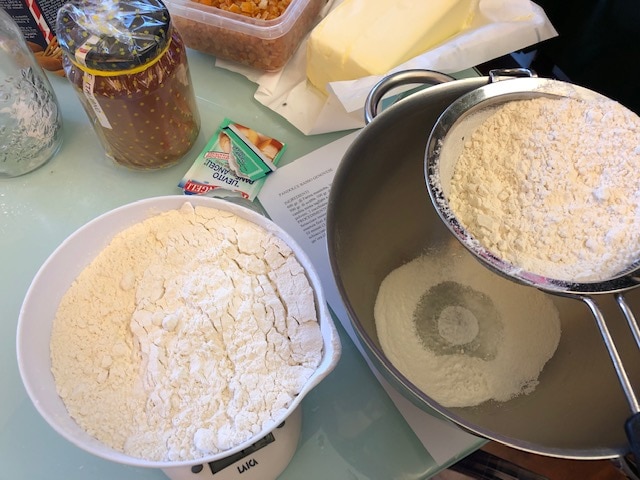
Add the butter, at room temperature, cut into pieces, and the sugar.
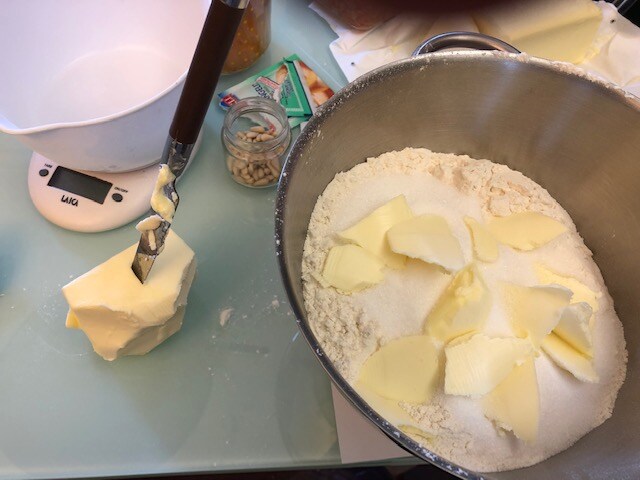
Also add the other ingredients: eggs, honey, orange blossom essence, and a pinch of salt.
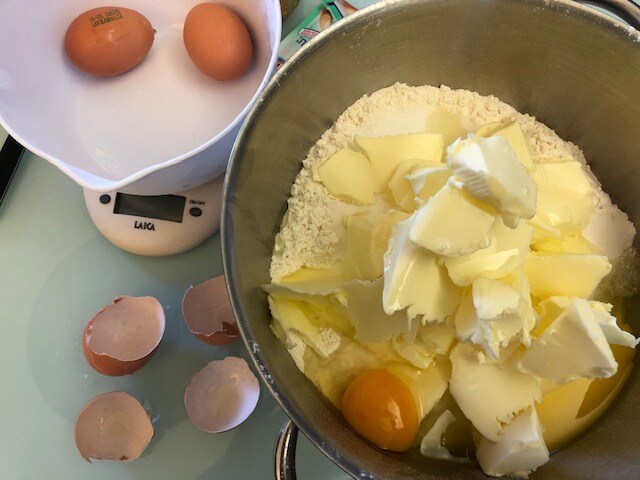
Knead everything in a bowl or on a pastry board for at least 5/6 minutes until all the ingredients are well blended and the dough is homogeneous (if using a mixer, 3 minutes are enough).
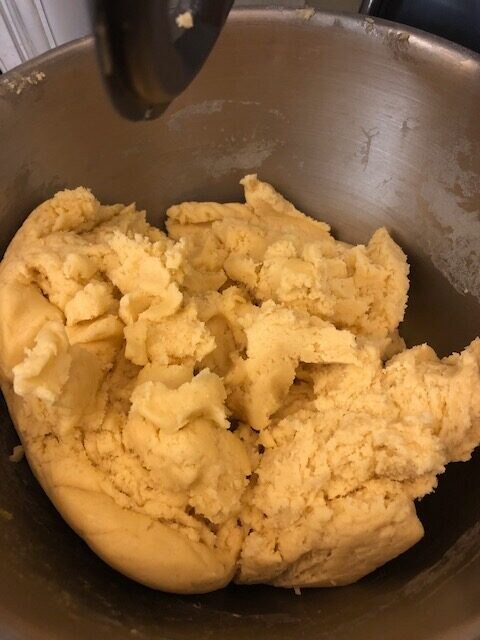
Now you can add the “toppings”: raisins, candied citron, and orange peel cut into cubes as similar as possible to each other and the size of the raisins, and finally the pine nuts. Knead again to evenly incorporate all the dried fruit into the dough. I recommend adding it in two batches, it’s easier to knead.
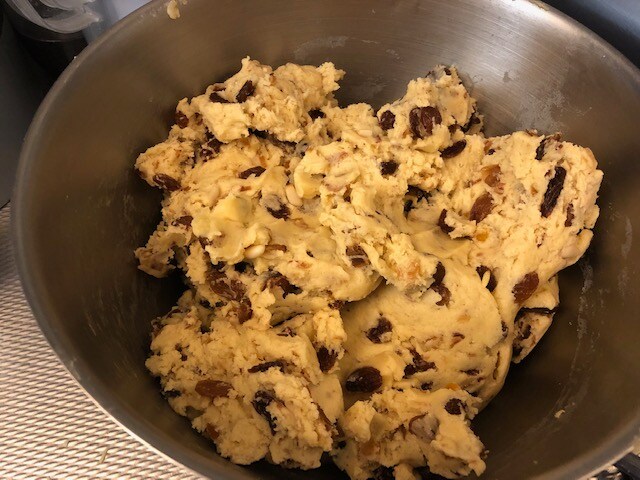
Now the dough is ready to be baked. You just have to decide the size of your Pandolci. I usually divide the dough into two and thus obtain 2 forms of Low Genovese Pandolce of about 2.6 lbs each (suitable for 6/8 people), but you can also make four and obtain the typical pastry shop size of 1.2 lbs.
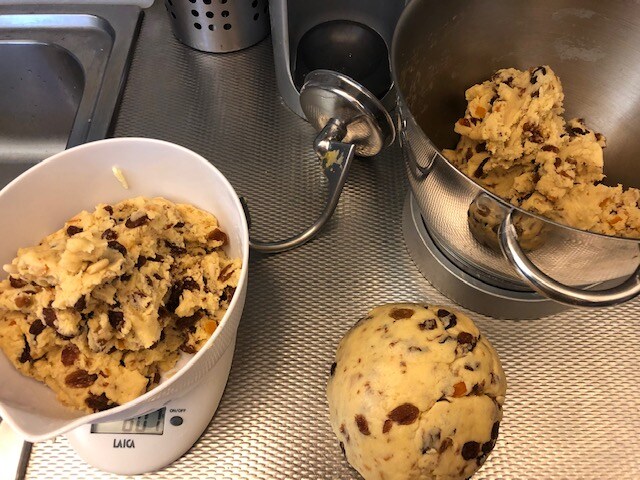
Once you’ve decided on the size, divide the dough, place it on a lightly floured work surface, flatten it slightly, then fold it over itself as if it were a loaf. Place each Pandolce on a baking sheet lined with parchment paper and press it with the palm of your hand on the surface to lower it slightly and obtain a disk about 1.5 inches thick with a slight dome.
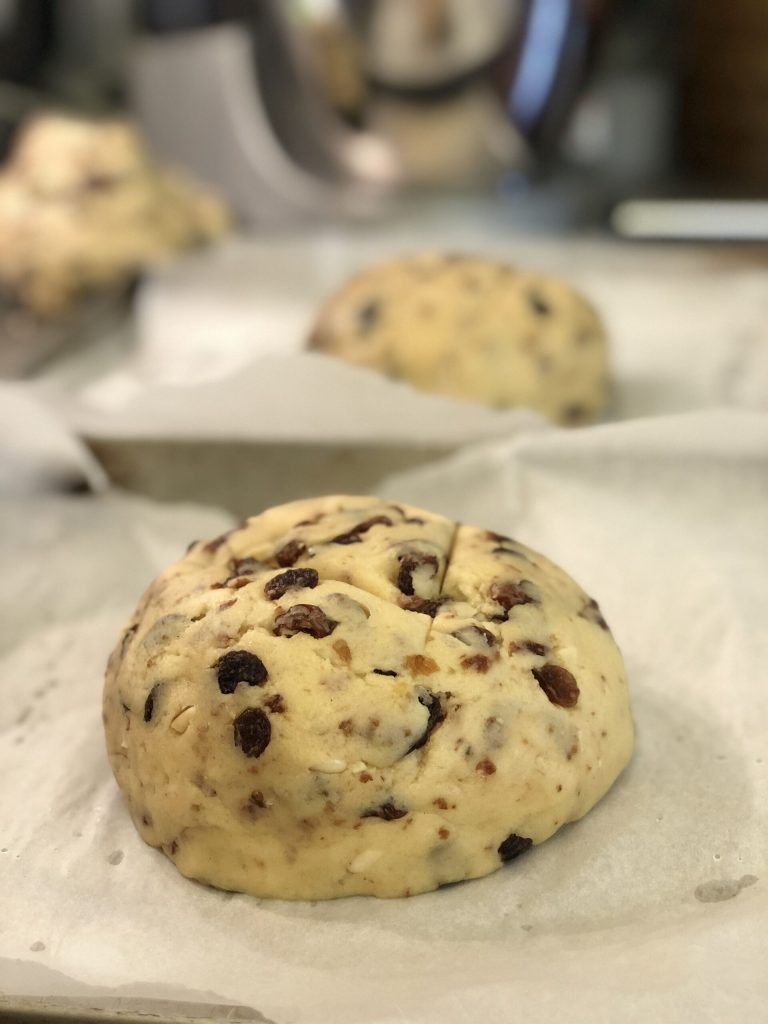
Bake in a preheated static oven at 340°F for about 50 minutes. The baking times obviously depend on the size of your Pandolce. I recommend checking the baking after 45 minutes by doing the toothpick test. If it still seems a bit raw, leave it in the oven for a few more minutes, preferably covered with foil to prevent it from burning too much on the surface. Once ready, take it out of the oven and let it cool.
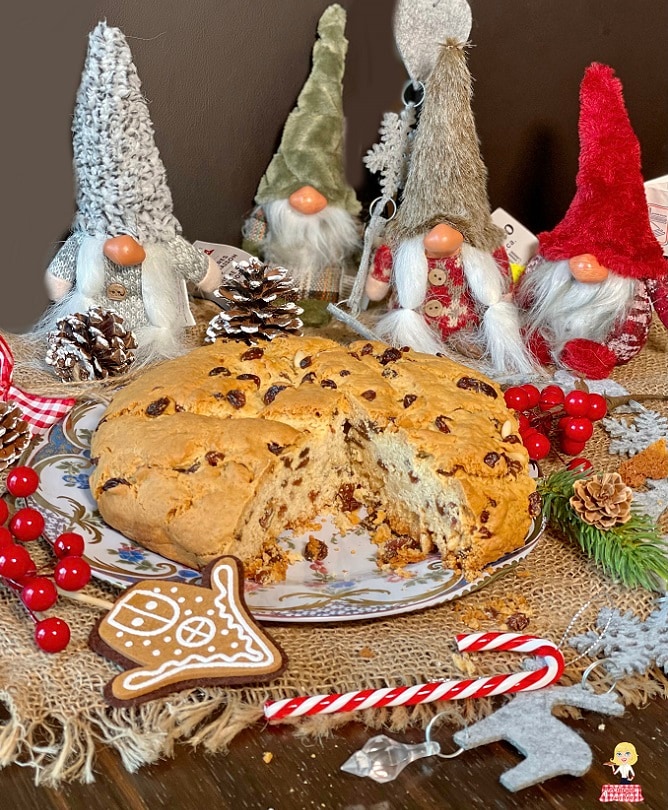
STORAGE
Once ready, the Low Genovese Pandolce can be stored for up to 10 days if well wrapped in foil and kept in an airtight container
ORIGINS OF THE GENOVESE PANDOLCE
The origins of pandolce are ancient and date back to the 16th century. It is said that during the government of Andrea Doria, Doge of Genoa, it was prepared for the first time to showcase the cultural and gastronomic wealth of the Ligurian maritime republic.
CURIOSITY
According to tradition, the GENOVESE PANDOLCE had to be brought to the table at Christmas by the youngest member of the family, who would pass it on for cutting to the oldest.
Two slices of each Pandolce had to be saved: one traditionally given to the poor, and the other eaten on February 3rd, Saint Blaise’s day, for throat protection.
On November 12th, 2023, the first edition of the Low Genovese Pandolce Championship will be held
VARIANTS
Some recipes include the addition of fennel seeds and rum for an even more fragrant and aromatic product; others use anise seeds and Marsala.
You can also use grated lemon or orange zest for a citrus note.
For some time now, in GENOA, versions with chocolate chips instead of candied fruit and toasted hazelnuts have appeared, for an even more delicious variant suitable for little ones.
FAQ (Questions and Answers)
How do you say pandolce in Genovese?
In Genovese, Pandolce is written as pandôçe and pronounced panduse.

